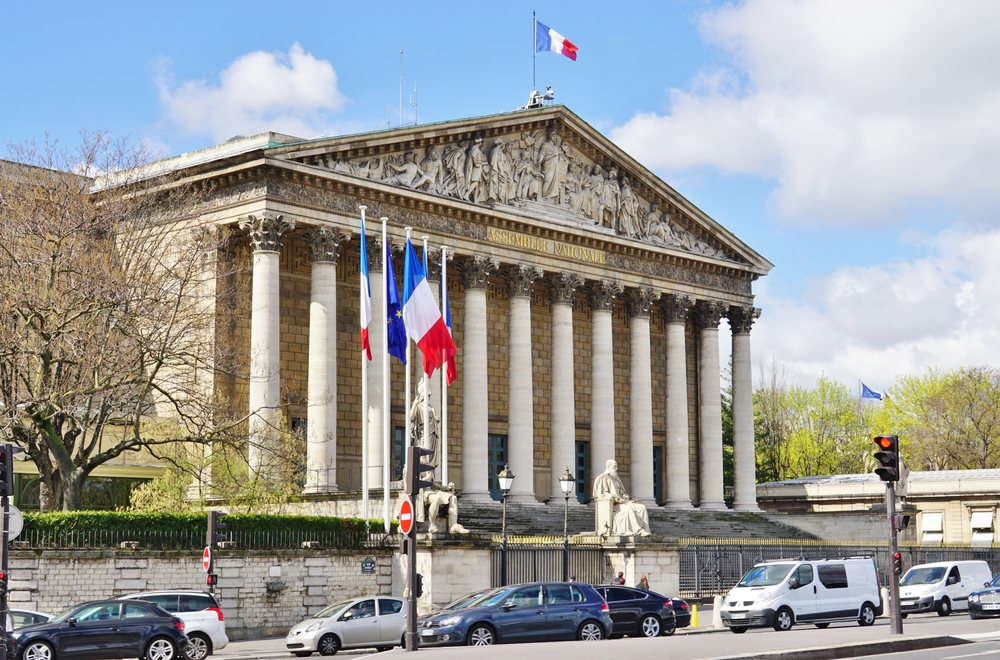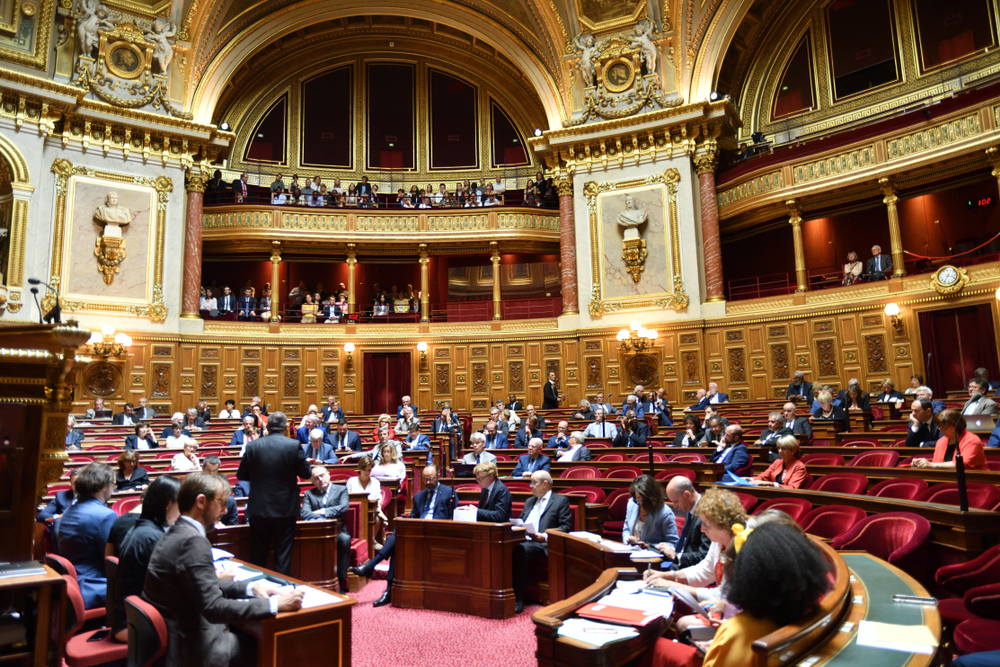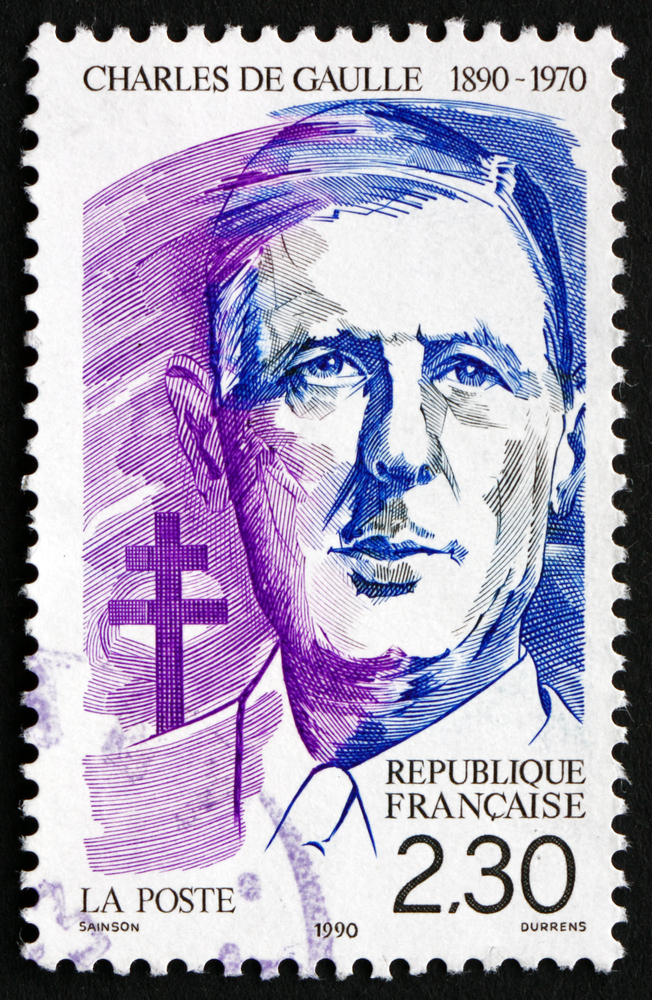Government Overview
Country
Local Long Form: Republique francaise
Local Short Form: France
Etymology: Name derives from the Latin Francia meaning "Land of the Franks." The Franks were a group of Germanic tribes located along the middle and lower Rhine River in the 3rd century CE who merged with Gallic-Roman populations in succeeding centuries and to whom they passed on their name.
Capital
Paris: Name derives from the Parisii, a Celtic tribe that inhabited the area from the 3rd century BCE but who were conquered by the Romans in the 1st century BCE. The Celtic settlement became the Roman town of Lutetia Parisiorum (Lutetia of the Parisii). Over subsequent centuries it became Parisium and then just Paris.
Geographic coordinates: 48 52 N, 2 20 E
Time Difference: UTC+1 (6 hours ahead of Washington, DC, during Standard Time)
Daylight Savings: +1hr, begins last Sunday in March, ends last Sunday in October
Independence
Date: No official date of independence: 486 (Frankish tribes unified under Merovingian kingship), 10 August 843 (Western Francia established from the division of the Carolingian Empire), 14 July 1789 (French monarchy overthrown), 22 September 1792 (First French Republic founded), 4 October 1958 (Fifth French Republic established)
Constitution
History: Many previous; latest effective 4 October 1958
Amendments: Proposed by the president of the republic (upon recommendation of the prime minister and Parliament) or by Parliament. Proposals submitted by Parliament members require passage by both houses followed by approval in a referendum. Passage of proposals submitted by the government can bypass a referendum if submitted by the president to Parliament and passed by at least three-fifths majority vote by Parliament’s National Assembly. Amended many times; last in 2008.
Legal System
Civil law, review of administrative but not legislative acts
Citizenship
Citizen By Birth: No
Citizen By Descent: At least one parent must be a citizen of France.
Dual Citizenship Recognized: Yes
Residency requirement for Naturalization: Five years
Suffrage
Suffrage: 18 years of age, universal
Executive Branch
Chief of State: President
Head of Government: Prime minister
Cabinet: Council of Ministers appointed by the president at the suggestion of the prime minister
Description: The executive branch is composed of the president, prime minister, and the ministers and secretaries of state who constitute the Council of Ministers (Conseil des Ministres). The president is directly elected by absolute majority popular vote (in two rounds if needed) for a five-year term, with eligibility for a second term. The president selects a prime minister and appoints the Council of Ministers, usually from among members of the National Assembly. In times when the president’s party controls the National Assembly, the French system generally gives more power to the president than to the prime minister. However, when the president and the National Assembly majority are from different parties, the president’s powers become more limited, and the president and prime minister must work together in a divided government arrangement called a cohabitation.
Legislative Branch
Description: Lawmaking powers are vesting the bicameral Parliament (Parlement), which consists of the Senate (Senat) and National Assembly (Assemblee Nationale), with the National Assembly as the generally more powerful chamber. The Senate has 348 seats, with senators indirectly elected by departmental electoral colleges using absolute majority vote (in two rounds if needed) for departments with fewer than four senators and proportional representation vote in departments with four or more senators. Senators serve six-year terms with half of the membership renewed every three years. The National Assembly has 577 seats, with members directly elected by absolute majority vote (in two rounds if needed) and serving five-year terms.
Judicial Branch
Description: The highest judicial bodies are the Court of Cassation (Cour de Cassation) and the Constitutional Council. The Court of Cassation consists of the court president, six divisional presiding judges, 120 trial judges, and 70 deputy judges, and is organized into six divisions (three civil, one commercial, one labor, and one criminal). Judges are appointed by the president, from nominations from the High Council of the Judiciary, which presided over by the Court of Cassation itself and 15 appointed members. The judges serve lifetime terms. The Constitutional Council consists of nine members. Three are appointed by the president, and three each by the National Assembly and Senate presidents. Members serve nine-year, single terms, with one-third of the membership renewed every three years. Subordinate courts include appellate courts (cours d'appel), regional courts (tribunals de grande instance), first instance courts (tribunals d'instance), and administrative courts.
Copyright © 1993—2024 World Trade Press. All rights reserved.

 France
France 


